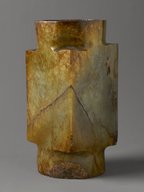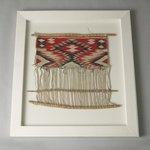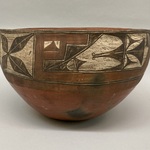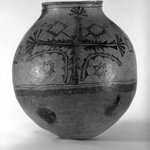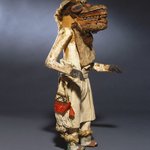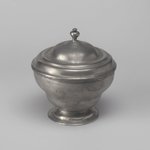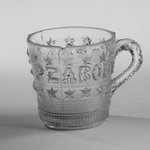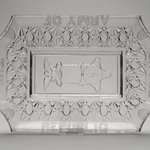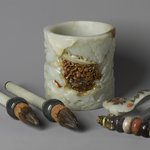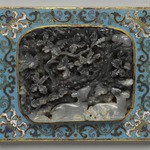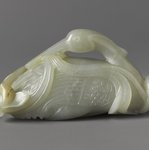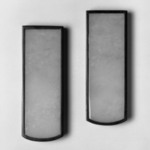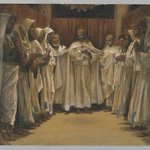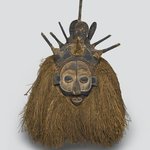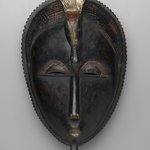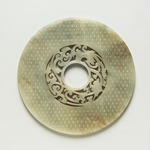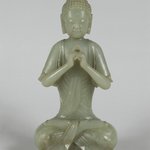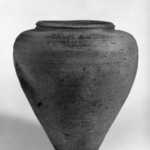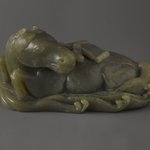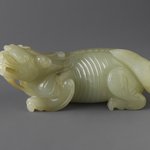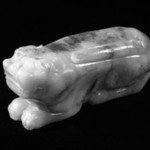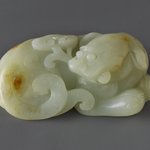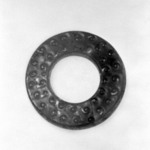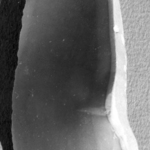Ritual Tube (Cong)
Asian Art
The tube-shaped ritual jade object called a cong first appeared in northeast China in the Neolithic period, circa 4000–2100 B.C. Although the precise ceremonial use of the cong is unknown, writers in the late Zhou dynasty described the cong as a symbol of the Earth, pairing it with the ritual disk called a bi, which was thought to symbolize Heaven. Cong are rare after the Neolithic period, although they were sometimes rediscovered in the Shang and Zhou dynasties and cherished as ancient objects. Unlike many highly decorated cong tubes from the south-central Chinese Liangzhu culture, this cong is very simple in form, with an undecorated surface. The style and the dark, almost black jade associate it with jades from the Longshan culture in China's Shaanxi province dated to approximately 2500-1700 B.C.
MEDIUM
Jade (nephrite)
DATES
late 19th century
DYNASTY
Qing Dynasty
PERIOD
Qing Dynasty
DIMENSIONS
2 3/4 x 2 3/4 x 6 1/2 in. (7 x 7 x 16.5 cm)
(show scale)
ACCESSION NUMBER
71.116.3
CREDIT LINE
Gift of Elizabeth F. Babbott in memory of Dr. Frank L. Babbott
MUSEUM LOCATION
This item is not on view
CAPTION
Ritual Tube (Cong), late 19th century. Jade (nephrite), 2 3/4 x 2 3/4 x 6 1/2 in. (7 x 7 x 16.5 cm). Brooklyn Museum, Gift of Elizabeth F. Babbott in memory of Dr. Frank L. Babbott, 71.116.3. Creative Commons-BY (Photo: Brooklyn Museum, 71.116.3_PS4.jpg)
IMAGE
overall, 71.116.3_PS4.jpg. Brooklyn Museum photograph, 2015
"CUR" at the beginning of an image file name means that the image was created by a curatorial staff member. These study images may be digital point-and-shoot photographs, when we don\'t yet have high-quality studio photography, or they may be scans of older negatives, slides, or photographic prints, providing historical documentation of the object.
RIGHTS STATEMENT
Creative Commons-BY
You may download and use Brooklyn Museum images of this three-dimensional work in accordance with a
Creative Commons license. Fair use, as understood under the United States Copyright Act, may also apply.
Please include caption information from this page and credit the Brooklyn Museum. If you need a high resolution file, please fill out our online
application form (charges apply).
For further information about copyright, we recommend resources at the
United States Library of Congress,
Cornell University,
Copyright and Cultural Institutions: Guidelines for U.S. Libraries, Archives, and Museums, and
Copyright Watch.
For more information about the Museum's rights project, including how rights types are assigned, please see our
blog posts on copyright.
If you have any information regarding this work and rights to it, please contact
copyright@brooklynmuseum.org.
RECORD COMPLETENESS
Not every record you will find here is complete. More information is available for some works than for others, and some entries have been updated more recently. Records are frequently reviewed and revised, and
we welcome any additional information you might have.

